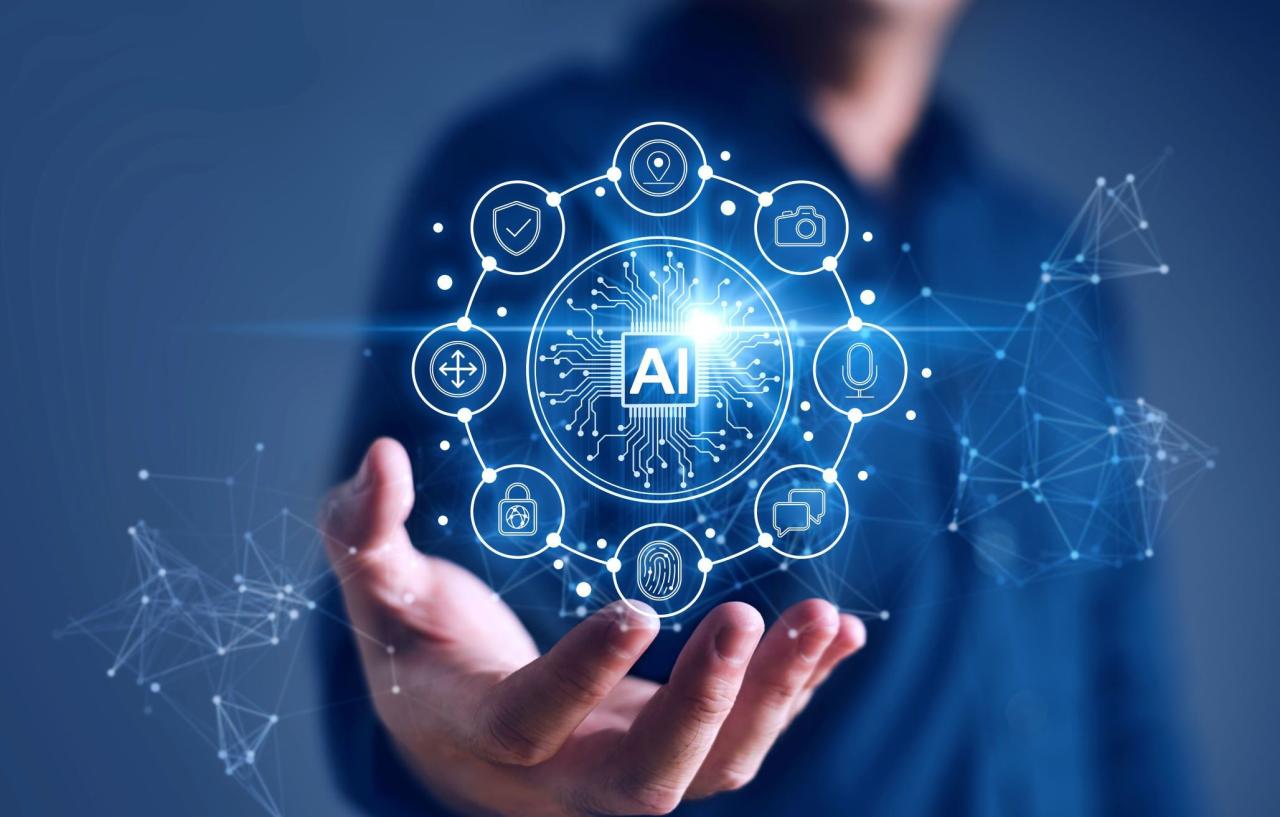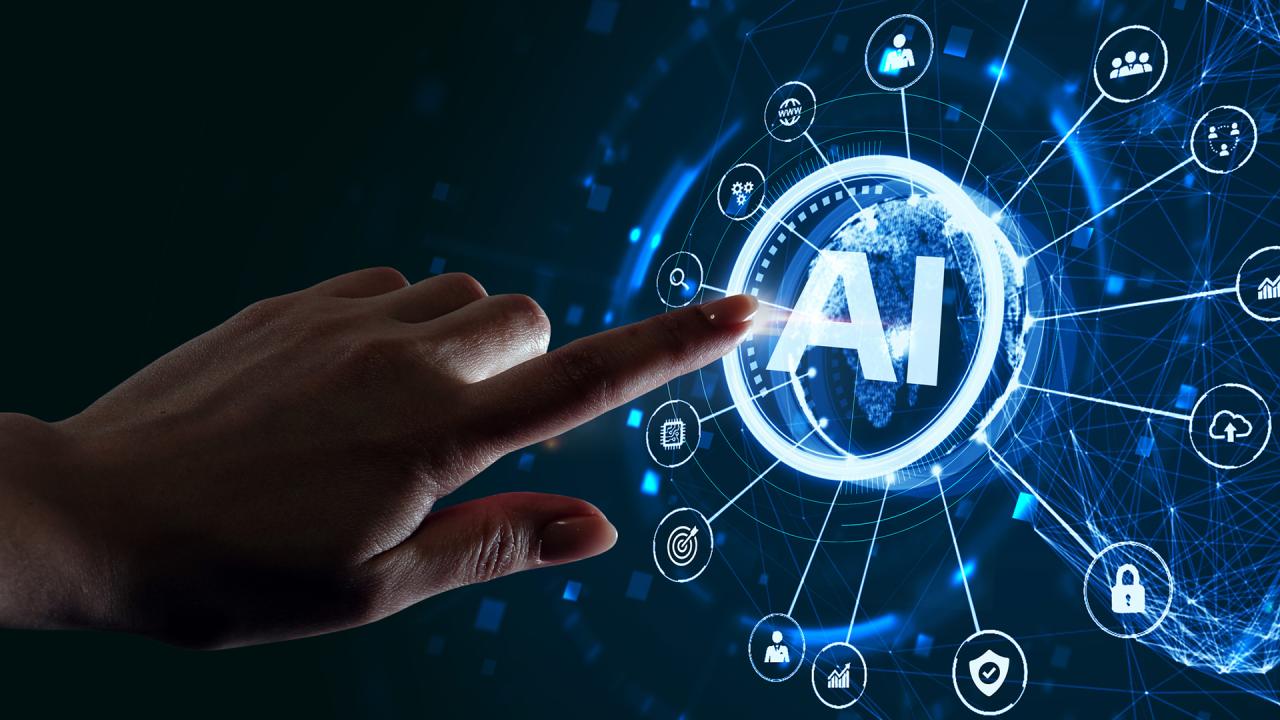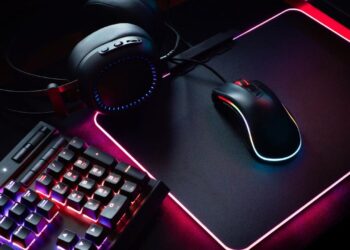The Dawn of Hyper-Intelligent Computing

The core engine of modern revolution lies in the evolution of computing, moving beyond conventional processors to specialized architectures that power the most sophisticated Artificial Intelligence (AI) and data-intensive tasks.
A. Specialized AI Processors (GPUs, TPUs, NPUs): While general-purpose Central Processing Units (CPUs) remain vital, the explosion of AI has necessitated purpose-built hardware. Graphics Processing Units (GPUs), with their massively parallel architecture, have become indispensable for the deep learning algorithms that power everything from autonomous vehicles to advanced medical diagnostics. Beyond GPUs, companies like Google have developed Tensor Processing Units (TPUs), custom-designed to accelerate machine learning workloads, offering unparalleled efficiency for AI training and inference in data centers. For consumer devices, Neural Processing Units (NPUs) are integrated into smartphones and laptops, enabling on-device AI capabilities like real-time language translation, advanced photography, and personalized user experiences without relying on cloud connectivity. This specialized hardware is the bedrock upon which the future of AI is built, allowing complex models to run faster and more efficiently than ever before.
B. Neuromorphic Computing Architectures: Drawing inspiration from the human brain, neuromorphic chips are a radical departure from traditional computing. Instead of separating memory and processing, these architectures integrate them, mimicking the brain’s parallel and event-driven processing. Projects like IBM’s TrueNorth and Intel’s Loihi are at the forefront, developing chips that consume significantly less power for certain AI tasks, particularly those involving continuous learning, pattern recognition, and sensory data processing. Imagine devices that can learn and adapt on the fly, similar to biological organisms, opening doors for truly autonomous robotics, intelligent sensors, and highly efficient edge computing where real-time learning is critical.
C. Quantum Computing Systems (Early Frontier): Though still in its nascent stages, quantum computing represents the ultimate frontier of computational power. Unlike classical computers that use bits representing 0 or 1, quantum computers use qubits which can exist in multiple states simultaneously (superposition) and be entangled. This enables them to perform calculations exponentially faster for specific, complex problems that are currently intractable for even the most powerful supercomputers. Fields like drug discovery, material science, complex financial modeling, and breaking modern encryption algorithms stand to be completely revolutionized by practical quantum computers. Companies like IBM, Google, and Rigetti are racing to build stable, scalable quantum hardware using superconducting circuits, trapped ions, and photonic systems, pushing the boundaries of what computation can achieve.
D. Edge Computing Hardware: As the Internet of Things (IoT) expands, sending all data to the cloud for processing becomes inefficient. Edge computing hardware processes data closer to its source – at the “edge” of the network. This minimizes latency, reduces bandwidth consumption, and enhances data privacy and security. Specialized edge devices, from industrial controllers to smart cameras, embed powerful processors that can perform real-time AI analysis locally. This is crucial for applications demanding immediate response, such as autonomous vehicles navigating complex environments, smart factories monitoring production lines, and critical infrastructure management, ensuring robust and responsive operations even with intermittent cloud connectivity.
Immersive and Spatial Computing Tools
The way we interact with digital information is evolving beyond flat screens to immersive, interactive, and spatial experiences that seamlessly blend with our physical world.
A. Next-Generation Virtual Reality (VR) Headsets: Modern VR headsets are achieving unprecedented levels of realism and immersion. Advances in display technology (higher resolution, wider field of view, faster refresh rates), improved optics (pancake lenses, foveated rendering), and more comfortable designs are making VR experiences more compelling and less fatiguing. Beyond gaming, VR is revolutionizing training simulations for high-stakes professions (medicine, aviation, military), providing therapeutic environments for mental health, and creating deeply engaging educational platforms, allowing users to explore historical sites or distant planets virtually.
B. Advanced Augmented Reality (AR) Glasses: AR glasses overlay digital information onto the real world, enhancing our perception without fully obscuring our surroundings. Current models are becoming sleeker and more lightweight, aiming to resemble everyday eyewear. This technology offers incredible potential for navigation (directions projected onto the road), retail (virtually trying on clothes), and professional assistance (repair instructions superimposed on complex machinery). The integration of powerful cameras, depth sensors, and AI enables AR glasses to accurately understand the physical environment and seamlessly anchor digital content within it, making digital assistance a constant, subtle companion in our daily lives.
C. Mixed Reality (MR) and Spatial Computing Devices: Mixed Reality (MR) takes AR a step further, allowing digital objects to not only appear in the real world but also interact with it, responding to real-world physics and occlusion. Devices like Microsoft’s HoloLens are pioneering this field, enabling applications in collaborative design, remote work, and interactive education where virtual models can be manipulated as if they were tangible objects in your physical space. The broader concept of spatial computing aims to create a digital layer that understands and interacts with the physical world, allowing users to intuitively manipulate and share digital content directly within their physical environment, paving the way for truly interactive digital workspaces and personalized experiences.
D. Haptic Feedback Systems and Multimodal Interfaces: To enhance immersion beyond sight and sound, haptic feedback systems are becoming increasingly sophisticated. These devices—ranging from gloves that simulate texture and pressure to full-body suits that mimic environmental sensations like temperature and impact—provide tactile feedback that makes virtual interactions feel incredibly real. Combined with advanced gaze tracking, gesture control, and voice recognition, these multimodal interfaces are creating more natural and intuitive ways for humans to interact with digital content, reducing the reliance on traditional keyboards and mice and making technology more accessible and engaging.
Universal Digital Linkages
The backbone of modern technological advancement is ubiquitous and high-speed connectivity, with new tools continually pushing the boundaries of how and where we communicate.
A. 5G and Beyond (6G/Terahertz Communication): 5G is already transforming mobile connectivity with unprecedented speeds, ultra-low latency, and massive capacity, enabling real-time communications for autonomous vehicles, supporting vast IoT networks, and facilitating immersive streaming experiences. Looking ahead, research into 6G and terahertz communication promises even more dramatic leaps in speed (terabit-per-second), reliability, and capabilities like holographic communication and pervasive sensing. This next generation of wireless technology will be critical for truly intelligent cities, advanced robotic systems, and instant global collaboration.
B. Low Earth Orbit (LEO) Satellite Internet Systems: Projects like SpaceX’s Starlink and OneWeb are deploying vast constellations of LEO satellites to provide high-speed, low-latency internet access globally, particularly in remote and underserved areas. This revolutionary gear is bridging the digital divide, offering connectivity to communities previously excluded from the benefits of online education, remote work, and digital commerce. The accessibility provided by these satellite networks is a powerful tool for global economic development and social equity, bringing the power of the internet to every corner of the planet.
C. Internet of Things (IoT) Ecosystem Tools: The IoT continues its explosive growth, with everyday objects—from smart appliances to industrial sensors—embedded with connectivity and intelligence. Revolutionary IoT tools include tiny, ultra-low power sensors, secure communication modules, and platforms for managing vast networks of connected devices. These tools enable smart homes that anticipate your needs, intelligent cities that optimize traffic and resource management, and smart factories that streamline production and predict maintenance needs, creating truly responsive and efficient environments by generating and analyzing massive amounts of real-time data.
D. Optical Communication Technologies (Li-Fi, Free-Space Optics): Beyond traditional radio frequency (RF) communication, optical communication technologies are emerging as cutting-edge tools for high-speed, secure data transfer. Li-Fi, which uses visible light to transmit data, offers potential for incredibly fast, highly localized, and secure wireless communication in environments where RF is problematic. Free-Space Optics (FSO) uses laser beams to transmit data through the air, providing high-bandwidth point-to-point connections over long distances, serving as a rapid deployment alternative to fiber optics in certain scenarios, especially for connecting remote locations or temporary networks.
Advanced Manufacturing and Materials Tools
The very methods by which goods are produced are undergoing a profound transformation, driven by innovative manufacturing processes and the creation of entirely new materials.
A. Advanced Additive Manufacturing (Industrial 3D Printing): Industrial 3D printing, also known as additive manufacturing, has moved far beyond hobbyist plastic printing. Cutting-edge industrial 3D printers can now fabricate complex parts from a wide array of materials, including high-strength metals (e.g., titanium, aerospace alloys), ceramics, and advanced polymers. Techniques like directed energy deposition, binder jetting, and stereolithography are used to create lightweight, custom components for aerospace, medical (implants), automotive, and even construction industries, enabling rapid prototyping, on-demand manufacturing, and the production of geometries previously impossible with traditional methods.
B. Precision Robotics for Manufacturing and Assembly: Modern manufacturing relies heavily on precision robotics. These robots are equipped with highly accurate sensors, advanced vision systems, and sophisticated grippers, allowing them to perform intricate assembly tasks, conduct precise welding, or handle delicate components with sub-millimeter accuracy. Collaborative robots (cobots), designed to work safely alongside human operators, enhance flexibility and efficiency in production lines, making automation accessible even for smaller businesses and for tasks requiring human dexterity combined with robotic strength.
C. Nanotechnology Tools for Material Engineering: At the atomic and molecular scale, nanotechnology tools are enabling the creation of materials with unprecedented properties. This includes sophisticated atomic force microscopes (AFMs) and scanning tunneling microscopes (STMs) for visualizing and manipulating individual atoms, and specialized reactors for synthesizing nanomaterials like graphene, carbon nanotubes, and quantum dots. These revolutionary tools are leading to breakthroughs in electronics (smaller, faster chips), energy storage (more efficient batteries), medicine (targeted drug delivery), and advanced composites (lighter, stronger materials), opening up entirely new possibilities for product design and functionality.
D. Automated Inspection and Quality Control Systems: To ensure the highest quality in advanced manufacturing, automated inspection and quality control systems are essential tools. These include high-speed 3D scanners, AI-powered vision systems that detect microscopic defects, robotic arms with integrated sensors for precise measurements, and non-destructive testing (NDT) equipment. These tools can perform rapid, accurate, and consistent inspections, reducing human error, accelerating production cycles, and ensuring that complex, high-value components meet stringent specifications, which is critical for industries like aerospace and medical devices.
Breakthroughs in Health and Life Sciences Tools

The tools revolutionizing healthcare and life sciences are pushing the boundaries of diagnosis, treatment, and our fundamental understanding of human biology.
A. CRISPR and Gene-Editing Technologies: CRISPR-Cas9 and other gene-editing tools are truly revolutionary. These molecular instruments allow scientists to precisely edit DNA sequences, offering unprecedented control over genetic material. This holds immense promise for treating genetic diseases (like sickle cell anemia and cystic fibrosis), developing new therapies for cancer, and even engineering crops with enhanced traits. The ability to precisely modify the blueprints of life opens up a new era of personalized medicine and biological engineering, though ethical considerations remain paramount.
B. Advanced Medical Imaging and Diagnostics: Beyond traditional X-rays and MRIs, new medical imaging tools are providing unprecedented clarity and diagnostic power. AI-powered image analysis can detect anomalies in scans often missed by the human eye, leading to earlier and more accurate diagnoses. Liquid biopsy tools can detect cancer and other diseases from a simple blood sample, identifying disease markers without invasive procedures. Wearable diagnostic patches that continuously monitor vital signs, glucose, and other biomarkers are also becoming sophisticated tools for proactive health management and early disease detection.
C. Personalized Medicine Tools and Pharmacogenomics: The concept of personalized medicine is being realized through tools that analyze an individual’s unique genetic makeup. Pharmacogenomics tools use genetic information to predict how a patient will respond to specific drugs, allowing doctors to prescribe the most effective medication at the optimal dose, minimizing adverse reactions. This revolutionary approach is transforming drug development and patient care, ensuring treatments are tailored to the individual rather than a “one-size-fits-all” approach.
D. Robotic Surgery and Minimally Invasive Instruments: Robotic surgical systems provide surgeons with enhanced precision, dexterity, and visualization through magnified 3D views. These tools enable complex procedures to be performed through smaller incisions, leading to reduced pain, faster recovery times, and fewer complications for patients. Accompanying these robots are new generations of minimally invasive instruments, including flexible endoscopes with advanced imaging capabilities, and steerable catheters for precise interventions within the body, reducing the need for open surgery and improving patient outcomes.
E. Bioprinting and Regenerative Medicine Tools: The emerging field of bioprinting uses 3D printing techniques to create biological tissues and organs layer by layer, using “bio-inks” composed of living cells. While full organ printing is still in its early stages, these revolutionary tools are already being used to create tissue models for drug testing, develop personalized implants, and hold the promise of eventually producing functional organs for transplantation, addressing the critical shortage of donor organs and transforming regenerative medicine.
The New Age of Exploration and Sustainability Tools
Humanity’s drive to explore the unknown and safeguard our planet is being supercharged by cutting-edge instruments designed for extreme environments and environmental stewardship.
A. Advanced Deep-Sea Exploration Vehicles: Exploring the vast and mysterious deep ocean requires incredibly robust and technologically advanced tools. Autonomous Underwater Vehicles (AUVs) and Remotely Operated Vehicles (ROVs) equipped with high-resolution sonar, advanced cameras, robotic manipulators, and specialized sensors are mapping uncharted seabeds, discovering new species, and studying hydrothermal vents. These tools are crucial for understanding marine ecosystems, assessing climate change impacts, and discovering new resources in extreme pressure and dark environments.
B. Next-Generation Space Telescopes and Probes: The universe continues to reveal its secrets thanks to revolutionary space exploration tools. Next-generation space telescopes like the James Webb Space Telescope (JWST) are peering back to the dawn of the universe, observing exoplanets, and providing unprecedented insights into star and galaxy formation. Advanced robotic probes with sophisticated scientific instruments are embarking on missions to distant planets, moons, and asteroids, collecting data that is fundamentally changing our understanding of the solar system and the potential for life beyond Earth.
C. Climate Monitoring and Environmental Sensing Tools: Addressing climate change and environmental degradation relies on precise data. Cutting-edge climate monitoring tools include satellite-based sensors that track greenhouse gas emissions, deforestation, and ice sheet melt with unprecedented accuracy. Terrestrial sensor networks, drone-mounted systems, and AI-powered analytics tools can monitor air and water quality, track biodiversity, and predict extreme weather events. These essential tools provide the critical data needed for scientific research, policy-making, and conservation efforts, enabling proactive environmental management.
D. Sustainable Energy Generation and Storage Equipment: The transition to a sustainable future is heavily dependent on revolutionary energy tools. This includes highly efficient solar panel technologies (e.g., perovskites, thin-film solar), larger and more efficient wind turbines (especially offshore designs), and advanced energy storage solutions like grid-scale batteries (e.g., flow batteries, solid-state designs for utilities). These tools make intermittent renewable energy sources more reliable and integrated into power grids, reducing reliance on fossil fuels and driving the global shift towards clean energy.
Challenges and Ethical Imperatives
While these revolutionary tools promise incredible advancements, their emergence also brings a myriad of challenges and profound ethical considerations that demand careful and proactive engagement.
A. Data Privacy and Cybersecurity Vulnerabilities: The interconnected nature of these tools means they generate and transmit vast amounts of data, much of it sensitive. Ensuring robust cybersecurity measures and implementing stringent data privacy regulations are paramount to protect individuals and critical infrastructure from malicious attacks, data breaches, and surveillance. The more powerful the tools, the greater the potential for misuse if not properly secured.
B. Ethical AI and Algorithmic Bias: As AI-powered tools become more pervasive, concerns about algorithmic bias and ethical decision-making grow. If training data is flawed or unrepresentative, AI systems can perpetuate and even amplify societal inequalities. Developing explainable AI (XAI), ensuring transparency, and creating robust ethical frameworks for AI development and deployment are crucial to foster trust and prevent unintended harm, especially in applications impacting critical societal functions.
C. Job Displacement and the Future of Work: The increasing automation and advanced capabilities of these revolutionary tools will inevitably lead to significant shifts in the labor market. While new jobs will emerge, others may become obsolete. Societies must invest heavily in reskilling and lifelong learning programs to equip the workforce with the skills needed for these new roles, fostering adaptability and ensuring a just transition for all segments of the population.
D. Equitable Access and the Digital Divide: The benefits of these revolutionary tools must be accessible to all, not just a privileged few. There’s a significant risk that without deliberate efforts, these advancements could exacerbate the existing digital divide, creating wider gaps between those with access to cutting-edge technology and those without. Policies promoting affordability, infrastructure development, and digital literacy are vital to ensure inclusive growth.
E. Regulation and Governance of Advanced Technologies: The rapid pace of technological innovation often outstrips the ability of existing regulatory frameworks to adapt. Establishing clear, adaptable, and internationally coordinated governance and regulatory frameworks for areas like gene editing, autonomous weapons, and bio-integrated devices is essential. This requires ongoing dialogue among scientists, ethicists, policymakers, and the public to ensure these powerful tools are developed and used responsibly for the benefit of humanity.
Conclusion
In conclusion, the tools emerging today are not merely incremental upgrades; they are revolutionary instruments that are fundamentally changing everything. From redefining the limits of computation and human-computer interaction to transforming how we produce goods, treat diseases, and explore our universe, these innovations promise a future of unprecedented capabilities. While the journey ahead will undoubtedly present its complexities and ethical dilemmas, embracing these transformative technologies with foresight, responsibility, and a commitment to equitable access will be key to harnessing their full potential for a more prosperous, sustainable, and enlightened future for all.











